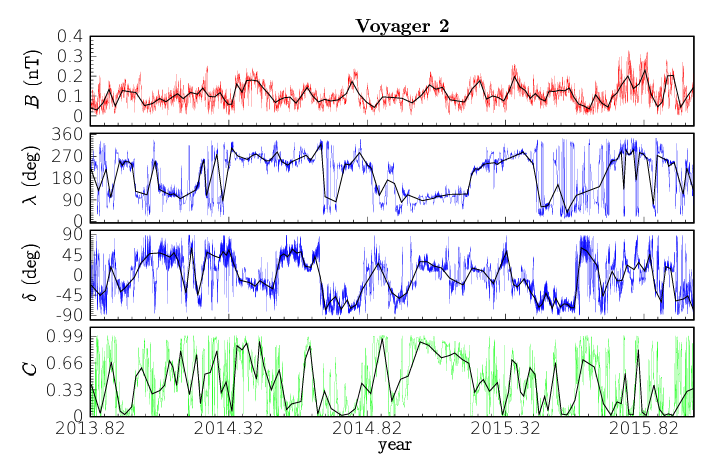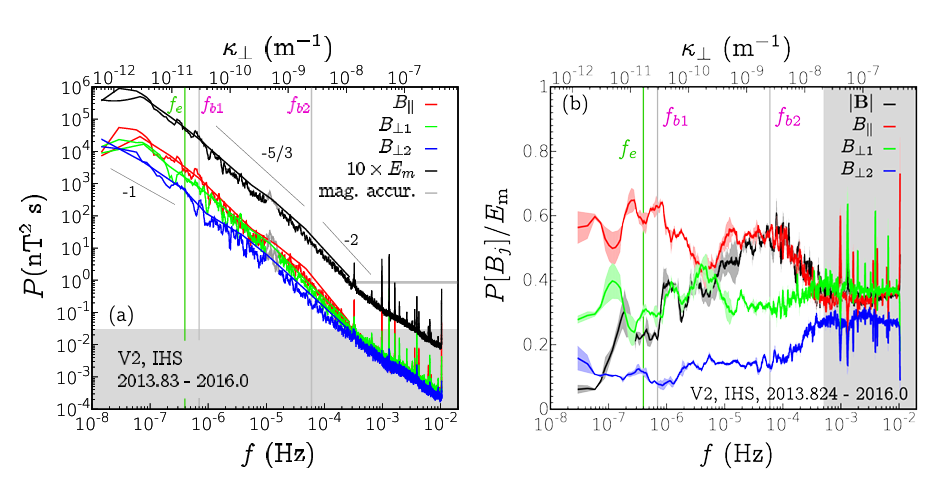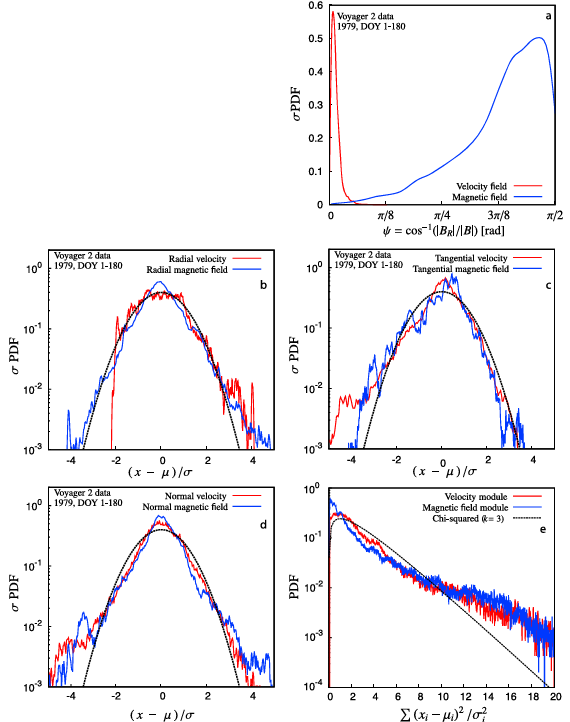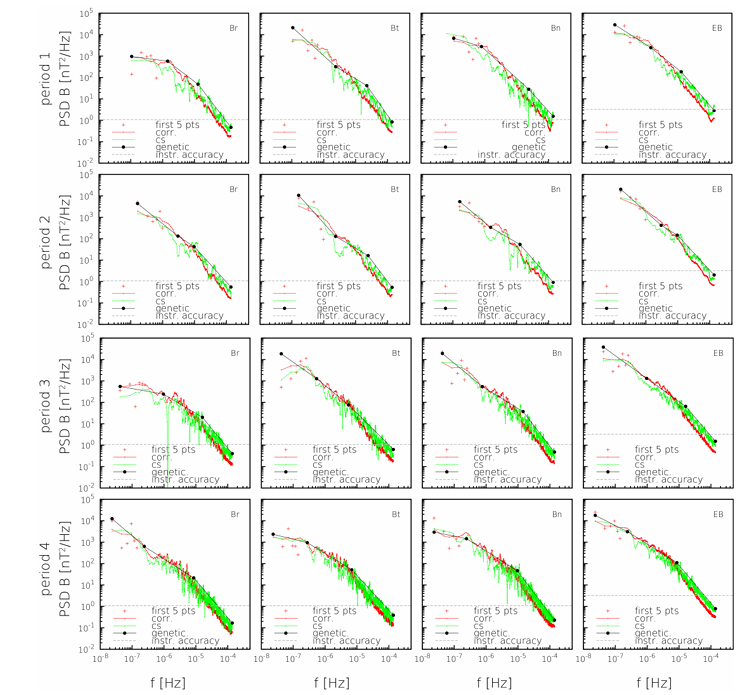30 Oct NASA ROSES 2015
NASA ROSES 2015
Title: Spectral analysis of the plasma and magnetic fields at the edge of the heliosphere using Voyager data
Partners:
- Politecnico di Torino
- MIT Kavli Institute (J.Richardson)
- Boston University (M.Opher)
PROPOSAL SUMMARY
Science question
The proposed work intends to study, on the basis of Voyager plasma and magnetic field data, the turbulence spectra in the solar wind, the heliosheath, and the local interstellar medium over significantly extended frequency ranges. The key scientific questions are (a) What are the characteristics of the turbulence (macroscale, energy injection, as well as inertial range scaling and their changes, detection of dissipative range) in these regions, and (b) To what extent can
These characteristics can be obtained from long but sparse data sets by employing independent gap-filling Numerical techniques.
Methodology
The approach of this study is to apply gap-filling numerical techniques to the sparse Voyager 2 data set, where up to 97% of the data is missing. The four techniques to be applied are (i) the so-called correlation method, (ii) the maximum likelihood recovery method, (iii) compressed sensing (all three optimized by combination with a genetic algorithm), and (iv) artificial neural networks. These techniques would first be validated at well-known reference systems, whose
data would be prepared to exhibit a sparsity equivalent to that of the Voyager data. They would then be applied to the Voyager data sets. A spectrum would be deemed acceptable only if at least three of the independent methods give consistent results.
We proposed to characterize the turbulence in the solar wind, heliosheath, and local interstellar medium. We are developing an advanced spectral analysis technique based on several independent data gap reconstruction methods. We consider a spectral result reliable if three of these independent analysis methods give the same answer. These techniques will be used to characterize the turbulence, in some regions for the first time and in some regions over a much larger frequency range (by orders of magnitude) than previously possible. In addition to the analysis of current data, this work will prepare the ground for the spectral analysis of LISM plasma data when V2 crosses the heliopause. The Voyagers (V1, V2) are the only operating spacecraft providing us with in situ data from the outermost part of heliosphere. The inner heliosheath (IHS) is the region of space between the termination shock (TS) and the heliopause (HP). The HP is a tangential discontinuity that separates the solar wind (SW) from the local interstellar medium (LISM).
For more details see:
The structure of magnetic turbulence in the Heliosheath region observed by Voyager 2 at 106 AU
Magnetic Turbulence Spectra and Intermittency in the Heliosheath and in the Local Interstellar Medium
Voyager 2 solar plasma and magnetic field spectral analysis for intermediate data sparsity

Figure 1. Voyager 2 data considered in the present study, observation period 2013.824-2016.0. Top to bottom: the magnetic- field magnitude B =|B|; the azimuthal angle = tan ^-1(BT /BR)

Figure 2. Power spectral density of magnetic field fluctuations, anisotropy and compressibility

Figure 3. Structure functions of magnetic field increments

Figure 4. Probability density functions of the plasma velocity and magnetic field fluctuations. (a) Normalized probability density function of the angle 𝜓 between the radial direction and the local velocity (red line) and magnetic (blue line) fields. The magnetic field is generally tilted 85 to 105∘ with respect to the radial direction. (b–d) Normalized probability density function of the plasma velocity and magnetic field components in the radial (Figure 2b), tangential (Figure 2c), and normal (Figure 2d) directions, and of their module (Figure 2e), normalized as in equation (1). For more details see Journal of Geophysical Research: Space Physics 2015

Figure 5. Heliosheath velocity field analysis. P1 2007.7 – 2008.0 – Sectored Heliosheath (SH), P2 2008.0 – 2008.2 – Unipolar Heliosheath (UH), P3 2008.2 – 2009.15 – Sectored Heliosheath (SH), P4 2009.15 – 2010.5 Unipolar Heliosheath (UH). Preliminary results from Fraternale et al. 2015. Different behaviour in the sectored and unipolar regions can be observed.

Figure 7. Same as Figure 6, but with the Heliosheath magnetic field.



